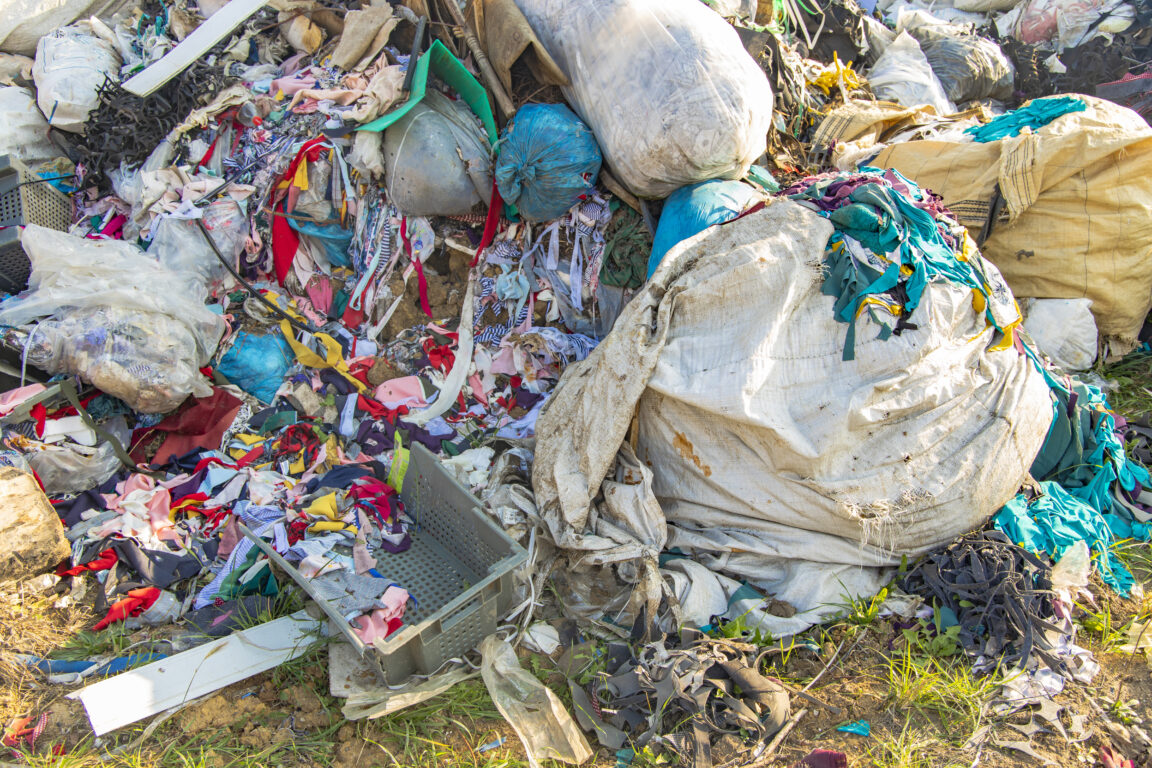Towards zero waste: How East Africa is handling the textile waste crisis

As the world observed the International Day of Zero Waste on March 30th under the theme “Towards Zero Waste in Fashion and Textiles,” East Africa’s escalating textile waste crisis demands urgent attention. Both Kenya and Tanzania are grappling with the environmental and social challenges posed by the influx of second-hand clothing and the rise of fast fashion. However, innovative initiatives and policy discussions are emerging to address these issues and promote sustainable practices within the region.
Kenya imports over 200 million kilogrammes of used textiles annually, with Nairobi alone contributing approximately 20 million kilogrammes. This influx, although economically beneficial, generates significant waste. Daily, between 150 and 200 tonnes of textile waste are either dumped, burned, or sent to overflowing dumpsites, equating to 60 to 75 truckloads. Such waste often clogs waterways, pollutes the environment, and emits toxic gases when burned.
In Tanzania, the situation mirrors that of Kenya. A substantial portion of imported second-hand clothing is of such low quality that it cannot be resold, leading to increased waste accumulation. Approximately 40% of these imports are deemed unsellable, exacerbating the country’s waste management challenges.
Environmental and social implications
The environmental impact of textile waste in East Africa is profound. In Kenya, poor textile waste disposal has led to the pollution of various water sources, including the Nairobi River, which runs adjacent to Gikomba, the country’s largest second-hand textile market. Similarly, in Tanzania, the accumulation of unsellable garments contributes to environmental degradation, as the country struggles with inadequate waste management infrastructure to handle the surplus.
Socially, the influx of low-quality second-hand clothing undermines local textile industries. In Kenya, for instance, the once-thriving textile sector has seen a drastic decline in employment, from over half a million people to less than 20,000, largely due to the dominance of imported used clothing. This trend stifles local production and innovation, hindering economic growth and cultural expression within the fashion industry.
Innovative solutions
Amidst these challenges, organisations in Kenya are pioneering sustainable solutions. Africa Collect Textiles (ACT), established in 2013, has developed a model for collecting and processing used textiles. By 2023, ACT had collected over 78,130 kilogrammes of used textiles, transforming them into products such as rugs, handbags, and pencil bags. These items are sold locally and exported to countries like Switzerland, Germany, and the Netherlands. ACT aims to recycle 250,000 kilogrammes of textile waste annually by the end of 2023 and increase this to 500,000 kilogrammes by 2024.
Another notable initiative in Kenya is the “Closing the Loop on Textile Waste” partnership. This collaboration focuses on regenerating fabric waste into virgin-quality fibre for textile production. By collecting and sorting 100,000 kilogrammes of textile cotton waste, the partnership has established a commercially viable model capable of processing at least 36,000 kilogrammes of textile waste per month, with plans to scale up to 100,000 kilogrammes monthly. This technology uses 99% less water, reduces greenhouse gas emissions by 40-90%, and consumes 90% less energy compared to traditional virgin fibre production.
Despite these efforts, significant challenges persist. The quality of imported second-hand clothing has declined, with many items being unsellable due to stains, damage, or poor quality. Traders often find themselves with garments soiled with vomit, heavy stains, or animal hair, rendering them unwearable and leading to increased waste. Additionally, the lack of awareness among textile traders about recycling opportunities hinders the effectiveness of waste management initiatives.
Sustainable fashion is gaining momentum in East Africa, with designers incorporating recycled materials into their creations. Events like Nairobi Fashion Week have showcased designs made from recycled materials and second-hand textiles. Designers such as Maisha by Nisria and Bone Koboyi are utilising discarded fabrics to create culturally rich and eco-friendly fashion pieces. These efforts not only reduce waste but also promote ethical sourcing and labour practices, preserving African cultural heritage. However, challenges remain, including high costs due to the exportation of raw materials and competition from fast fashion and second-hand clothing imports. Advocates are calling for policies to support local designers and textile industries, including tighter regulations on imported garments to bolster the growth of sustainable fashion in Africa.
Conclusively, addressing the textile waste crisis requires comprehensive policy interventions. Experts suggest implementing Extended Producer Responsibility (EPR) schemes to hold manufacturers accountable for the entire lifecycle of their products. Such measures could incentivise changes in production and waste management practices, encouraging the design of more durable and recyclable clothing. Legislation aimed at reducing overproduction and improving recycling infrastructure is essential to mitigate the environmental impact of textile waste.
The theme “Towards Zero Waste in Fashion and Textiles” underscores the urgent need for sustainable practices in managing textile waste in East Africa. While initiatives like ACT and the “Closing the Loop” partnership demonstrate the potential of circular economy models, broader systemic changes are necessary. Enhancing public awareness, improving waste management infrastructure, supporting local designers, and implementing effective policies are critical steps toward achieving zero waste in the fashion and textile industry. Through collective action and innovative solutions, East Africa can transform its textile waste challenge into an opportunity for sustainable development and environmental stewardship.

